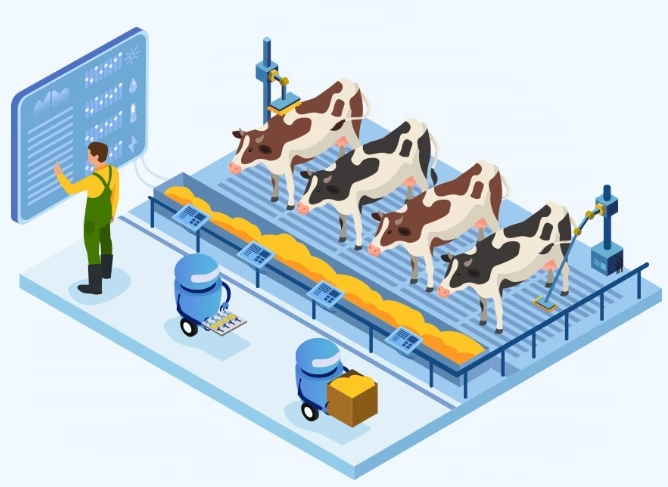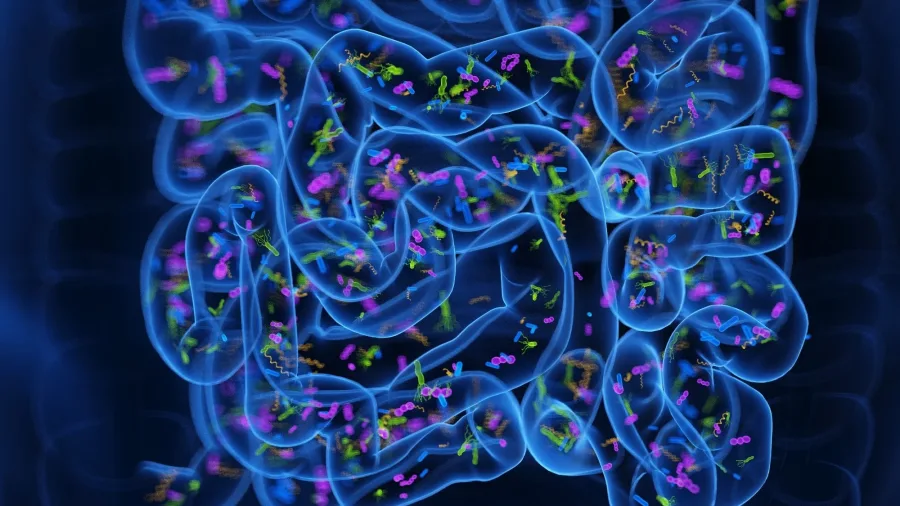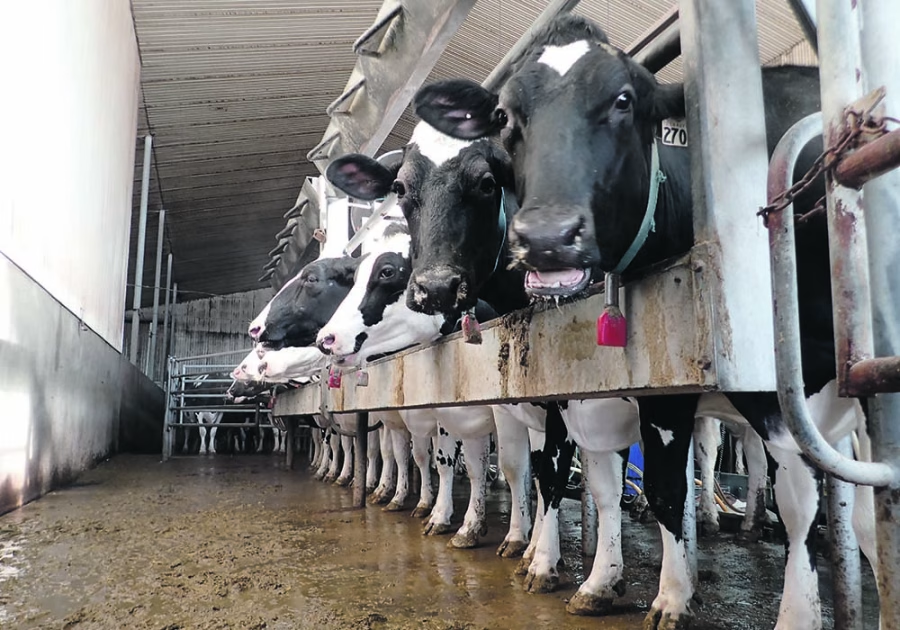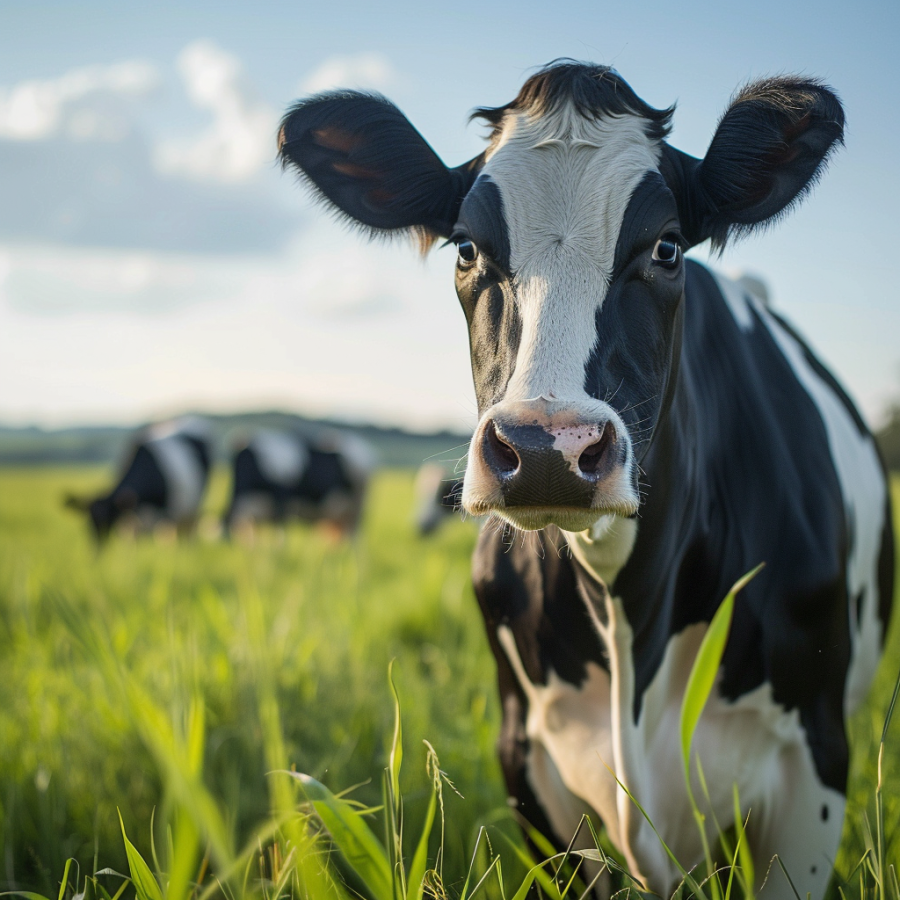Uncover how diseases in dairy cattle cost farmers $65 billion each year. Learn about comorbidities’ impact and how to reduce your losses.
Summary: A silent crisis might be creeping into your dairy farm, shrinking your bottom line without realizing it. Dairy cattle diseases like mastitis, lameness, and ketosis are silently gnawing at global profits, causing a staggering $65 billion annual loss worldwide. Imagine facing these challenges while also dealing with overlapping health issues or comorbidities that further complicate management and financial recovery. This article dives into the multifaceted impact of these diseases on milk yield, fertility, and culling rates, offering insights from industry experts, regional economic analysis, and practical preventive strategies to protect your assets and maximize productivity. The actual cost of cattle diseases is in lost milk and the ripple effects across the farm. Are you ready to turn the tide against these profit thieves?
- Dairy cattle diseases are causing a significant $65 billion annual loss globally.
- Conditions like mastitis, lameness, and ketosis majorly contribute to these losses.
- Comorbidities, or overlapping health issues, exacerbate management challenges.
- The diseases negatively impact milk yield, fertility, and culling rates.
- This article provides expert insights, practical strategies, and regional economic analysis.
- Understanding the full extent of these impacts can help protect farm assets and maximize productivity.

Imagine losing $65 billion each year. That is the enormous yearly loss resulting from dairy cow illnesses throughout the globe. These infections are more than a health issue for dairy producers; they are a financial nightmare. But what if you could prevent a significant portion of these losses? Diseases like mastitis and ketosis, while costly, are largely preventable. Understanding the financial impact of these illnesses is critical for dairy farmers to maintain their livelihood. So, how are these losses estimated, and what can dairy farmers do to prevent them? Stay with us as we break down the data and provide practical insights to help you protect your herd’s health—and your financial line.
Imagine Waking Up to Silent Profit Thieves: Mastitis, Lameness, and Ketosis Hitting Your Wallet Hard
Imagine waking up daily to care for your dairy cattle, only to discover that problems like mastitis, lameness, and ketosis are slowly eroding your income. Dairy farming is not only a profession but a way of life. Nonetheless, these 12 significant disorders – mastitis (subclinical and clinical), lameness, paratuberculosis (Johne’s disease), displaced abomasum, dystocia, metritis, milk fever, ovarian cysts, retained placenta, and ketosis (subclinical and clinical) – are causing havoc worldwide. Explain why they are essential and how they will affect your finances.
- Subclinical Ketosis: The Hidden Energy Crisis
Subclinical ketosis (SCK) is the most costly illness afflicting dairy cows, resulting in yearly worldwide losses of over $18 billion (B). But why is SCK so expensive? It often goes unnoticed because it lacks apparent signs. This concealed component causes protracted periods of low production and reproductive concerns. However, these losses can be significantly reduced with early detection and intervention. Cows with SCK had a substantially lower milk yield—up to 8.4% less each lactation than healthy cows [Raboisson et al., 2014]. A farm that produces 10,000 gallons of milk each year corresponds to an 840-gallon loss, which can be mitigated with early detection and management. - Clinical Mastitis: The Visible Threat
Clinical mastitis (CM) ranks second, resulting in yearly worldwide losses of around $13 billion [Boujenane et al., 2015; Heikkilä et al., 2018; Fukushima et al., 2022]. The illness causes apparent signs such as swelling, fever, and decreased milk quality, forcing producers to take fast action. However, what makes CM so harmful is its complicated influence on cow health. Fertility drops dramatically, extending the calving interval by around 8.42% [Schrick et al., 2001; Klaas et al., 2004]. The culling risk also increases, with afflicted cows being 2.3 times more likely to be killed prematurely [Sharifi et al., 2013; Haine et al., 2017]. Each early culling causes a farmer to spend on a new animal, which increases the economic burden. - Subclinical Mastitis: The Silent Milk Thief
Subclinical mastitis (SCM) ranks third, with annual global losses hovering around $9B [Krishnamoorthy et al., 2021]. Unlike its clinical counterpart, SCM silently lingers, diminishing milk quality and yield without drawing immediate attention. Studies reveal that SCM can reduce milk production by up to 6.29% per lactation [Pfützner and Ózsvari, 2017]. Although it does not elevate the culling risk to the extent of CM, it still increases the likelihood by 1.45 times [Beaudeau et al., 1995]. SCM often progresses to clinical mastitis if left untreated, doubling the financial damage over time.
When you look at your herd, these figures strike home. Each cow infected with one of these illnesses incurs more veterinary costs, reduces milk output, and may need early culling. The financial pressure includes not only immediate expenditures but also missed potential. Implementing effective management methods and early illness identification may significantly reduce losses, proving that your efforts are worthwhile. Understanding and tackling these factors might help you regain control of the economic situation.
Comorbidities: The Overlapping Health Battles
When addressing illnesses in dairy cattle, it’s critical to comprehend the idea of comorbidities. This word describes several health concerns present in a single animal. Consider a farmer who not only has a terrible back but also suffers from recurrent headaches and hypertension. Each disease is complex, but they all add to the difficulty of everyday existence. The same goes for dairy cows.
For example, a cow with mastitis may have lameness or ketosis. These circumstances do not add up; they may increase one another’s effects. Mastitis affects the milk supply, but if the cow is lame, it may struggle to reach the milking station, resulting in even less milk. When forced into ketosis, the cow becomes even less productive because it runs on empty, lacking the energy required to operate correctly.
Understanding comorbidities is critical for evaluating economic losses. Suppose you overlook that cows might suffer from various diseases simultaneously. In that case, you can conclude that a cow loses 10% of her yield due to mastitis and another 10% due to lameness, for a total loss of 20%. The losses are typically more severe owing to the added stress and many necessary treatments, which may further drive up prices. This makes precise economic evaluations difficult but vital for comprehending the effect on dairy output and farm finances.
By considering comorbidities, we can construct more accurate and realistic models. This allows farmers to grasp the actual cost of illnesses and make better choices regarding preventative and treatment measures. This comprehensive strategy guarantees that no hidden losses are neglected, eventually helping to preserve the farmer’s bottom line.
Field Stories: How Comorbidities Devastate Dairy Farms Worldwide
Case studies worldwide demonstrate the high toll that comorbidities exact on dairy farms. They generally present as a slew of minor ailments that accumulate into significant economic drains.
- Take Jim from Wisconsin as an example. Jim, an industry veteran, recently expressed his frustrations: “It began with lameness in a few cows, something we had previously dealt with. But shortly after, we saw an increase in mastitis. It seemed like we were patching one hole to have another open. The vet fees and lower milk output struck us hard—not something we expected.” Jim’s farm had a 15% decline in milk supply in only two months, which was related to the interconnected nature of the illnesses.
- Karen encountered a different but equally difficult situation in New Zealand. “We’ve controlled ketosis in the past, but this time it escalated. We had cows suffering from milk fever simultaneously, which exacerbated their symptoms. When cows suffer from several health conditions, recovery is delayed and more costly. Our expenditures virtually quadrupled, and we had to cut more than I’d like to admit.” Karen’s dilemma demonstrates the need to control and predict these overlapping health problems.
- In India, the effects of comorbidities are felt deeply due to the scale of their dairy operations. Rakesh, who manages a 200-head dairy farm, said, “We already struggle with diseases like mastitis and lameness. The cost is enormous When an outbreak and multiple diseases overlap. The productivity dips, and so does the families’ income dependent on these farms. It’s a vicious cycle hard to break without significant support and intervention.” His experience underscores the broader socio-economic impacts beyond just the farm gates.
These real-world examples highlight the importance of comorbidities in dairy farming. These are not isolated occurrences or figures but pervasive difficulties that farmers encounter daily, making proactive management and sound health regulations more critical than ever.
The Global Economic Impact: How Your Region Stacks Up
One intriguing conclusion from the research is that the economic burden of dairy cow illnesses varies significantly by area. For example, overall yearly losses differ substantially, with India, the United States, and China bearing the worst economic impacts. Losses in India total $12 billion, outweighing those in other areas. The US is just a little behind, with an estimated yearly loss of $8 billion. China ranks third, with $5 billion in annual losses.
Various variables, including herd size, management approaches, and local economic situations, drive these variances. Herd size is critical; more enormous herds naturally have more significant aggregate losses when illness strikes. For example, Indian farms often have bigger herd sizes, significantly increasing overall loss estimates. Management techniques have a significant impact. Advanced technology in the United States may mitigate certain losses. Still, significant economic expenses remain due to the large amount of milk produced.
Local economic factors further impact regional variances. The cost of veterinary services, medicine, and other inputs varies greatly, influencing farmers’ financial burden. While labor and treatment expenses may be cheaper in certain nations, reduced productivity might be more evident in higher-income areas with higher milk prices, increasing the economic impact per unit of lost output. This geographical variance highlights the need for personalized therapies and illness management techniques that consider these local differences. This guarantees that each area can successfully offset the unique economic repercussions.
Digging Deeper into Regional Variations: Key Players and Economic Factors
While overall aggregate losses are significant internationally, they vary significantly by area. For example, India, the United States, and China lead the way in absolute losses, with projected yearly estimates of roughly USD 12 billion, USD 8 billion, and USD 5 billion, respectively. Herd size is critical. India has the world’s largest dairy herd, which increases economic losses when illnesses occur. Modern dairy management methods and large herd numbers in the United States imply that health concerns may swiftly escalate into significant financial burdens.
Management strategies vary greatly and have a significant economic effect on dairy cow illnesses. Early illness diagnosis and treatment may help reduce long-term losses in places with innovative herd health management methods, like Europe and North America. However, the economic toll is generally worse in low-income communities, where preventative measures and veterinary care are scarce.
Local economic factors also contribute to inequality. Countries with solid agricultural industries, such as New Zealand and Denmark, may experience huge per capita losses since the dairy industry accounts for a significant portion of their GDP. Larger economies like the United States and China disperse these losses among a broader range of economic activity, resulting in slightly diminished per capita consequences. The heterogeneity highlights the need for specialized measures in controlling dairy cow illnesses across areas.
From Reactive to Proactive: Strategic Management to Combat Dairy Cattle Diseases
Combating dairy cow illnesses requires a proactive strategy to guarantee your herd’s health and production. Strategic management strategies may significantly decrease economic losses. Here’s how you can get started:
- Regular Health Checkups: An Ounce of Prevention
Regular health checks are essential. Schedule frequent veterinarian checkups to detect and treat problems early. Involve your veterinarian in creating a thorough health plan for your herd. Early diagnosis may save minor concerns from turning into expensive difficulties. - Invest in Preventive Measures: Upgrade Your Defense
Preventive healthcare should be a key component of your illness management plan. Vaccinations, sufficient diet, and clean living conditions are crucial. Implement biosecurity measures to prevent illnesses from spreading. Investing in high-quality feed and supplements may strengthen your cows’ immune systems, making them less prone to sickness. - Optimize Milking Practices: Clean and Effective
Mastitis is one of the most expensive illnesses; reasonable milking procedures are essential for prevention. Make sure that the milking equipment is cleaned and working properly. Train your crew on optimal milking techniques to reduce the danger of infection. - Monitor and Manage Nutrition: The Right Balance
Nutritional abnormalities commonly cause subclinical ketosis. Collaborate with a nutritionist to develop feeds that fulfill the energy requirements of high-producing cows, particularly during transitional seasons. Monitor your cows’ body condition scores regularly and alter feeding practices appropriately. - Foot Health Programs: Walking the Talk
Proper hoof care may treat lameness. Trim cow hooves regularly and ensure they tread on clean, dry surfaces. Implement footbaths and monitor foot health to discover and address problems early. Comfortable, well-kept flooring may help reduce hoof injuries and infections. - Data-Driven Decisions: Precision Farming
- Use technology to monitor herd health. Make educated choices based on health records, milk production, and activity monitor data. Software technologies may identify patterns and detect future health issues before they worsen.
- Employee Training: Knowledge is Power
- Ensure that your farmhands are well-taught to spot early indicators of common illnesses and to deal with sick animals. Regular training sessions help your staff stay updated on the newest disease management methods. A competent workforce serves as your first line of protection against illness outbreaks.
These measures may reduce economic losses and improve your herd’s health and production. Proactive management is essential for a sustainable and successful dairy farming enterprise.
Veterinarian Insights: Expert Tips on Disease Prevention
Veterinarians are critical to keeping your herd healthy and your farm profitable. Their knowledge may be very beneficial in controlling and avoiding illnesses like mastitis, lameness, and ketosis. We contacted leading veterinarians to get insight into illness prevention and management. Let’s go into their suggestions.
- Early Detection is Key
The earlier you detect a condition, the more influential the therapy. Regular monitoring and prompt response may mitigate long-term consequences. For example, if detected early, subclinical mastitis may be treated before it impacts milk output. Routine testing and thorough monitoring of your livestock may prevent more severe problems. - Balanced Nutrition
A good diet is the cornerstone of illness prevention. A well-balanced diet for your cows may help avoid diseases like ketosis and milk fever. Providing your cattle with enough minerals, vitamins, and energy will help strengthen their immune systems and make them more resistant to infections and metabolic diseases. - Clean and Comfortable Living Conditions
Using clean bedding and keeping barns well-ventilated can avoid many infections. Cramped circumstances and poor sanitation may cause mastitis outbreaks and other illnesses. A clean, pleasant environment decreases stress for your cows, making them less susceptible to sickness. - Regular Vaccinations
Vaccination regimens should be regularly followed to ensure the herd’s health. Keep your immunization regimen up to date. Many infections that may impede productivity can be prevented with timely vaccinations. Work with your veterinarian to develop a thorough immunization strategy that addresses all significant hazards to your herd. - Consistent Foot Care
Foot care is frequently disregarded, although it is critical in avoiding lameness. Regular hoof trimming and inspections may detect problems before they develop serious lameness concerns. Implementing a foot health program will keep your cows flexible and productive. - Effective Biosecurity Measures
Controlling the movement of people, animals, and equipment on and off your farm may help prevent disease transmission. Biosecurity is the first line of protection. Limiting interaction with other animals and ensuring visitors adhere to proper cleanliness practices minimize the danger of new infections entering your herd. - Strategic Use of Antibiotics
Antibiotics should be administered cautiously to avoid resistance. Antibiotics should only be used when necessary and with a veterinarian’s supervision. Antibiotic overuse may cause germs to develop resistance, making illnesses more challenging to treat in the long term.
Implementing these expert recommendations dramatically enhances disease prevention and herd health. Please maintain open contact lines with your veterinarian and include them in your ongoing farm management approach. Remember, prevention is always preferable to treatment.
The Bottom Line
In this post, we looked at the substantial economic effect of dairy cow illnesses such as mastitis, lameness, and ketosis, which cause billions of dollars in worldwide losses each year. Subclinical disorders such as subclinical mastitis and ketosis may quietly drain revenues without causing noticeable signs, and the existence of many co-occurring diseases exacerbates these losses. Countries like India, the United States, and China suffer the most significant aggregate losses. At the same time, smaller countries with concentrated dairy sectors also bear the burden per capita. To protect your herd and financial success, prioritize proactive health management methods, including frequent checkups, preventative measures, enhanced milking routines, and foot health programs. Think about these ideas and consider adopting them into your operations to reduce losses and increase productivity.
Learn more:
- Global Economic Impact of Dairy Cattle Diseases Estimated at $65 Billion
- Managing Disease Outbreaks on Dairy Farms: Save from Economic Losses & Improve Livestock Health
- Big Milk Checks and Low Feed Costs: A Profitable Summer for Dairy Producers
 Join the Revolution!
Join the Revolution!
Bullvine Daily is your essential e-zine for staying ahead in the dairy industry. With over 30,000 subscribers, we bring you the week’s top news, helping you manage tasks efficiently. Stay informed about milk production, tech adoption, and more, so you can concentrate on your dairy operations.







 Join the Revolution!
Join the Revolution!








